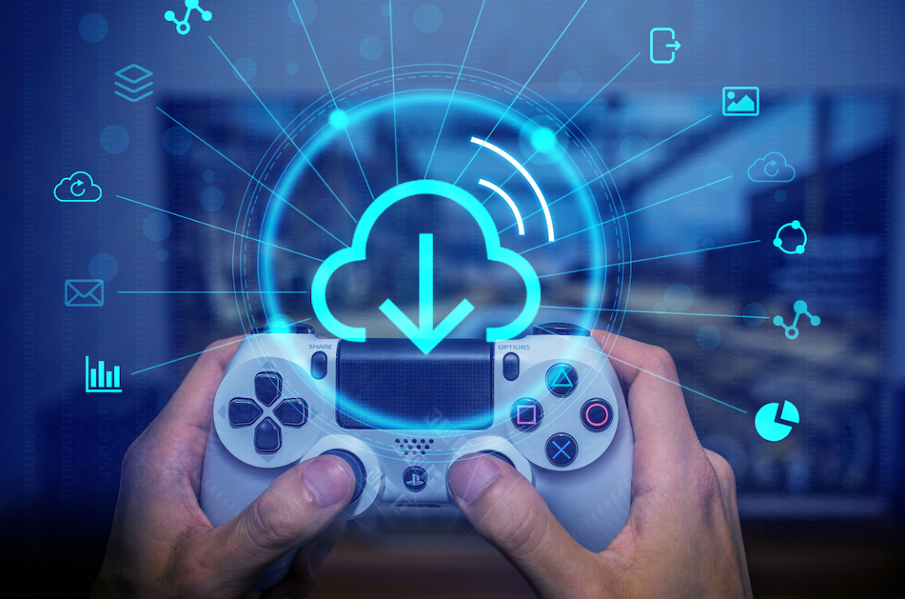The Future of Cloud Gaming
(Unveiling a New Era in Interactive Entertainment)
In recent years, the gaming industry has undergone a revolutionary transformation with the emergence of cloud gaming. This innovative technology has not only redefined the way we play games but also opened up a realm of possibilities for the future of interactive entertainment. As the technology continues to evolve and adapt, let's delve into the exciting realm of cloud gaming and explore what lies ahead.
The Evolution of Cloud Gaming
Cloud gaming, also known as game streaming, is a technology that enables players to access and play video games via remote servers rather than relying on powerful local hardware. This concept has gained traction due to advances in high-speed internet connectivity and server capabilities. With the advent of cloud gaming, gamers no longer need to invest in expensive gaming rigs or consoles. Instead, they can stream games directly to their devices, eliminating hardware limitations and accessibility barriers.
Current Landscape
Several major players have entered the cloud gaming arena, including Google Stadia, NVIDIA GeForce Now, Microsoft's Xbox Cloud Gaming (formerly Project xCloud), and Sony's PlayStation Now. These platforms offer varying degrees of game libraries, performance, and device compatibility.
The Future Potential
Seamless Accessibility:
The future of cloud gaming holds the promise of even greater accessibility. As internet infrastructure continues to improve globally, more gamers from different corners of the world will be able to enjoy high-quality gaming experiences without the need for expensive hardware upgrades.
Device Agnostic Gaming:
Cloud gaming has already begun breaking down the barriers between different devices. Gamers can seamlessly switch between playing on their smartphones, tablets, laptops, and even smart TVs. In the future, this cross-device flexibility will become even more pronounced, allowing gamers to start a game on one device and continue on another without interruption.
Game Library Expansion:
As cloud gaming gains traction, more game developers and publishers are likely to embrace the platform. This could lead to an expanded library of games available for streaming, including both new releases and classic titles. The subscription model, similar to Netflix for movies and TV shows, could become more prevalent, offering gamers access to a wide range of titles for a monthly fee.
Graphical Fidelity:
One of the early concerns about cloud gaming was the potential compromise in graphical quality due to streaming limitations. However, as technology advances, these limitations are likely to be mitigated. With the integration of cutting-edge GPUs and increased server capabilities, cloud gaming could provide stunning visuals that rival traditional gaming setups.
Challenges to Address
While the future of cloud gaming is promising, there are still challenges to address:
Latency: Achieving low latency is crucial for a smooth gaming experience. Despite advancements, the physical limitations of data transmission can result in input lag, which needs to be minimized for competitive and immersive gameplay.
Infrastructure Requirements: Cloud gaming heavily relies on robust internet infrastructure. In regions with limited connectivity, players might not be able to access the technology effectively.
Data Privacy and Security: Storing and transmitting user data over the cloud raises concerns about privacy and security. Cloud gaming platforms must prioritize data protection to ensure user trust.
Monetization Models: Striking a balance between subscription-based models, individual game purchases, and in-game purchases will be vital to sustain the industry's growth.
Conclusion
The future of cloud gaming is an exciting landscape of technological advancements, accessibility improvements, and innovative gaming experiences. As the industry overcomes challenges related to latency, infrastructure, and security, we can anticipate a world where gamers can enjoy high-quality, immersive experiences on a variety of devices, unencumbered by the limitations of traditional hardware. Cloud gaming is poised to redefine interactive entertainment and shape the way we play games in the years to come.






